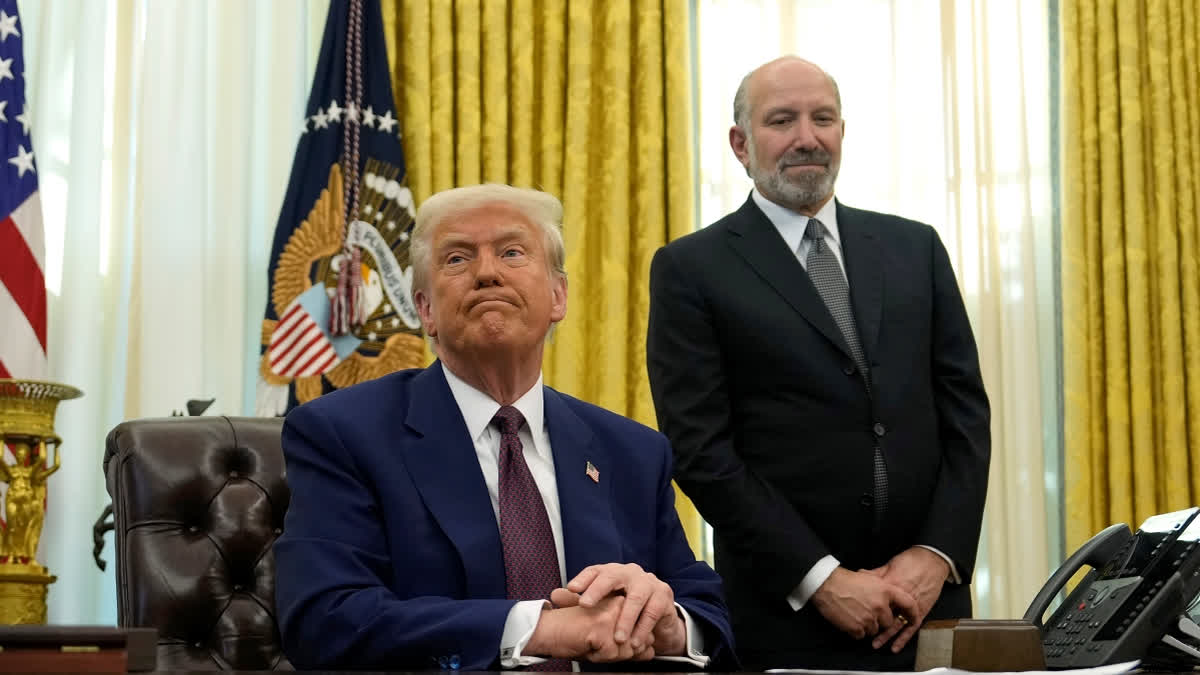Washington:President Donald Trump is taking a blowtorch to the rules that have governed world trade for decades. The “reciprocal’’ tariffs that he announced Thursday are likely to create chaos for global businesses and conflict with America’s allies and adversaries alike.
Since the 1960s, tariffs — or import taxes — have emerged from negotiations between dozens of countries. Trump wants to seize the process.
“It disrupts the way that things have been done for a very long time,’’ said Richard Mojica, a trade attorney at Miller & Chevalier. “Trump is throwing that out the window ... this is ripping up trade. There are going to have to be adjustments all over the place.’’
Pointing to America’s massive and persistent trade deficits – not since 1975 has the U.S. sold the rest of the world more than it’s bought -- Trump charges that the playing field is tilted against U.S. companies. A big reason for that, he and his advisers say, is because other countries usually tax American exports at a higher rate than America taxes theirs.
Trump has a fix: He’s raising U.S. tariffs to match what other countries charge. The president is an unabashed tariff supporter.
He used them in his first term, and three weeks into his second he has already slapped 10% tariffs on China; effectively raised U.S. taxes on foreign steel and aluminium; and threatened, then delayed for 30 days, 25% taxes on goods from Canada and Mexico.
Economists don't share Trump's enthusiasm for tariffs. They're a tax on importers that usually gets passed on to consumers. But it's possible that Trump's reciprocal tariff threat could bring other countries to the table and get them to lower their own import taxes.
“It could be win-win,” said Christine McDaniel, a former U.S. trade official now at George Mason University’s Mercatus Center. “It’s in other countries’ interests to reduce those tariffs.” She noted that India has already cut tariffs on items from motorcycles to luxury cars and agreed to ramp up purchases of U.S. energy.
What are reciprocal tariffs and how do they work?
They sound simple: The United States would raise its tariff on foreign goods to match what other countries impose on U.S. products.
“If they charge us, we charge them,’’ the president told reporters on Sunday. “If they’re at 25, we’re at 25. If they’re at 10, we’re at 10. And if they’re much higher than 25, that’s what we are too.’’
But the White House didn’t reveal many details. It has directed Commerce Secretary Howard Lutnick to deliver a report April 1 about how the new tariffs would actually work.
Among the outstanding questions, noted Antonio Rivera, a partner at ArentFox Schiff and a former attorney with U.S. Customs and Border Protection, is whether the U.S. is going to look at the thousands of items in the tariff code – from motorcycles to mangos -- and try to level the tariff rates out one by one, country by country.
Or whether it will look more broadly at each country’s average tariff and how it compares to America. Or something else entirely. “It’s just a very, very chaotic environment,” said Stephen Lamar, president and CEO of the American Apparel & Footwear Association. “It’s hard to plan in any sort of long-term, sustainable way.’’
How did tariffs get so lopsided?
America’s tariffs are generally lower than those of its trading partners. After World War II, the United States pushed for other countries to lower trade barriers and tariffs, seeing free trade as a way to promote peace, prosperity and American exports around the world.
And it mostly practiced what it preached, generally keeping its own tariffs low and giving American consumers access to inexpensive foreign goods. Trump has broken with the old free trade consensus, saying unfair foreign competition has hurt American manufacturers and devastated factory towns in the American heartland.
During his first term, he slapped tariffs on foreign steel, aluminum, washing machines, solar panels and almost everything from China. Democratic President Joe Biden largely continued Trump’s protectionist policies.
